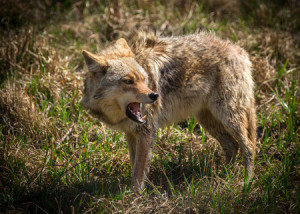 Coyote populations are on the rise across North America.
Coyote populations are on the rise across North America.
News stories from New York to Los Angeles have been touting this sharp population increase and its consequences left and right. Not familiar with America’s coyote problem? A quick Google News search of “coyote populations” will enlighten you quite quickly to this issue.
If you do (or just did) research this subject and can’t seem to understand what the problem is, let’s lay it out for you: As coyote populations increase uncontrollably, so do the potential negative consequences.
For example, according to the Internet Center for Wildlife Management (ICWM) — a collaboration between Cornell University, University of Wisconsin-Stevens Point, Clemson University and Utah State University — “distemper, hepatitis, parvo virus and mange (caused by parasitic mites) are among the most common coyote diseases. Rabies and tularemia also occur and may be transmitted to other animals and humans. Coyotes harbor numerous parasites including mites, ticks, fleas, worms and flukes.”
Yikes, right? Adding to the problem is that, also according to the ICWM, “coyotes can cause damage to a variety of resources, including livestock, poultry and crops such as watermelons. They sometimes prey on pets and are a threat to public health and safety when they frequent airport runways and residential areas, and act as carriers of rabies … Coyotes may kill more than one animal in a single episode.”
There is one bright spot in this seemingly negative turn of events however. At least, from the view point of some hunters. States are opening up coyote hunting for longer periods of time and to more people. In fact, in Michigan, the coyote hunting season is actually year around … and that includes inside city limits and suburbs. So if you’re interested in helping combat America’s coyote problem or just looking for a fun hunt, maybe a quick hunting trip to Michigan is something to think about.
